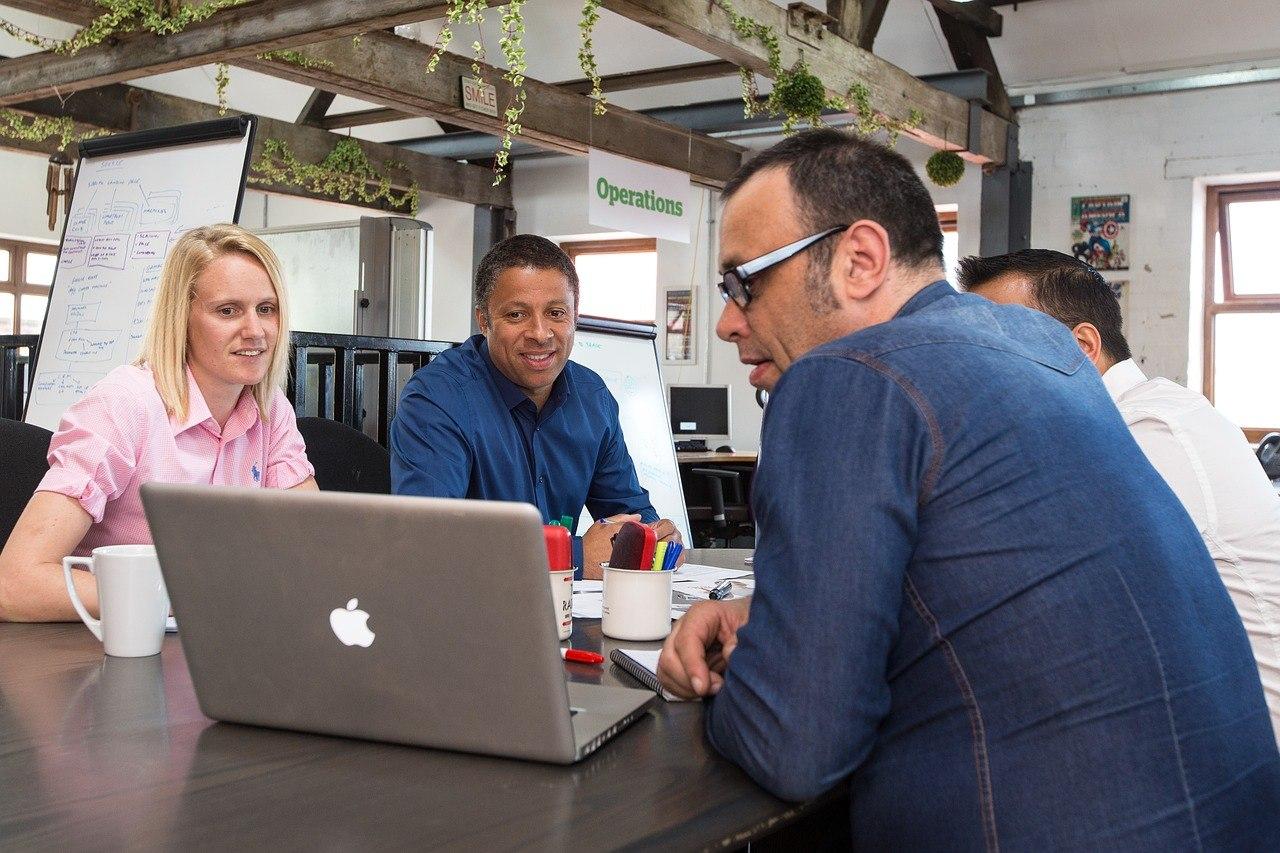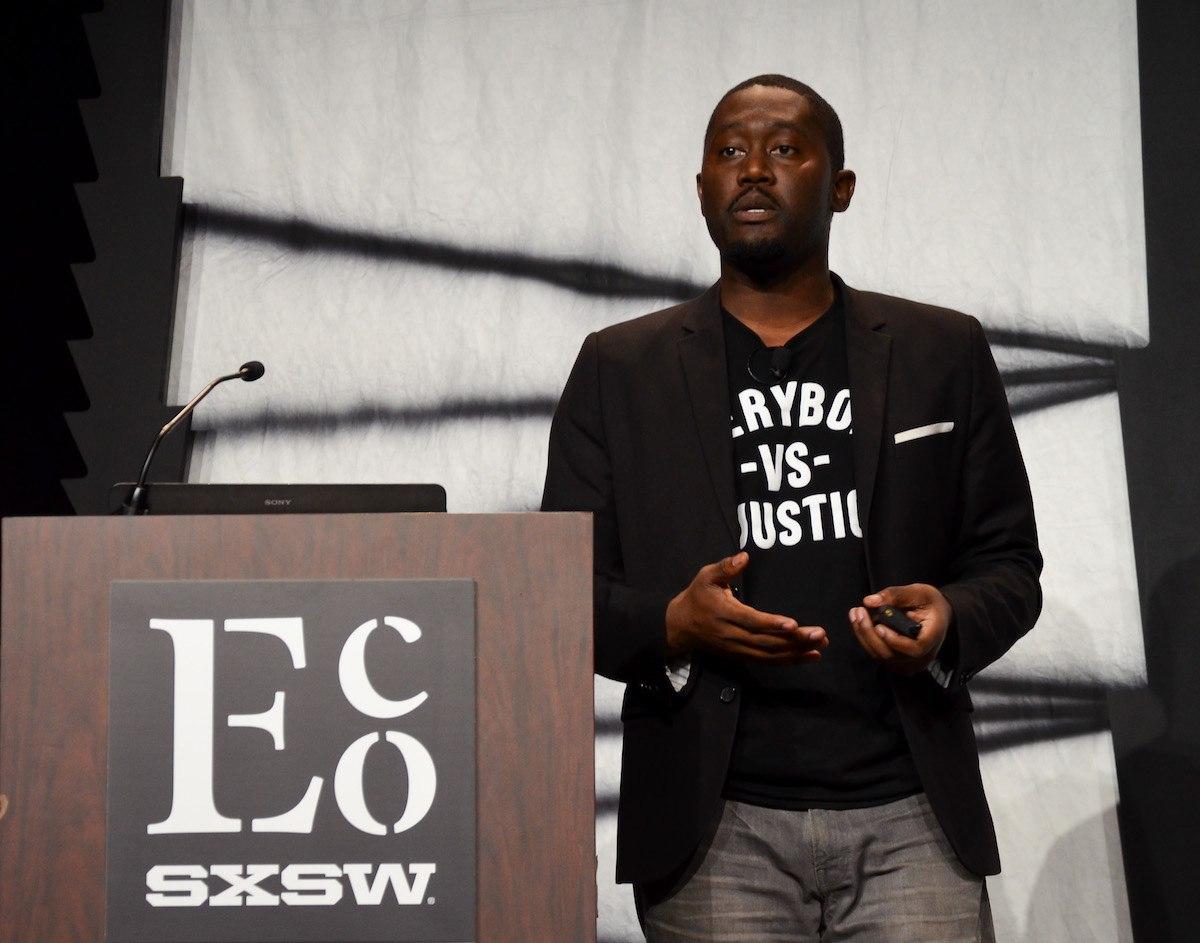How to Create and Integrate a Sustainability Strategy


Editor’s note: This post was originally published on the Sustainabilist blog.
By Chris Librie
Creating a sustainability strategy sounds daunting, doesn’t it? Trust me, it doesn’t have to be. And like any major project or business transformation, it's best approached systematically. Here’s my high-level guide.
What is sustainability?
First, you should align your company on a definition. According to the United Nations, a sustainable business “meets the needs of the present without compromising the ability of future generations to meet their own needs.”
Since that’s a bit of a mouthful, I often focus on the triple bottom line – or “people, planet, profit” – the three elements that must be in balance in order to achieve sustainable results. I like to emphasize that profit is one of these. Otherwise, your business will not survive long enough to have a positive impact!
What does sustainability mean for our company?
The challenge is connecting these lofty concepts directly with your business. One way to do this is by conducting a materiality analysis. This exercise involves considering what your stakeholders expect of you, as well as what’s critical to drive your business.
Materiality analyses can be done simply by talking with a number of leaders inside and outside your organization. In large companies, materiality is frequently represented as a matrix, and the issues are often grouped by strategic themes. In any event, the business should focus its sustainability strategy on those issues most important to stakeholders and the company.
For illustration purposes, here’s a great example from PG&E’s 2015 sustainability report.
Measure, measure, measure
It’s often said that you can’t manage what you don’t measure. So, I’ve found the art of footprinting to be highly important to sustainability strategy. Start with carbon, and map out all of your impacts across the value chain. If you can, footprint water impacts, as well.
I led these efforts at two companies, and we gained many critical insights. In both cases, the company’s direct impacts – its offices and other owned operations – were only about 10 percent of the total footprint. The rest of the impacts were either upstream – in the supply chain – or downstream in customers’ use of products and services.
What projects could we implement to improve?
Insights into what’s material, and where your company's impacts are largest, will lead directly to project ideas for sustainability improvements.
Perhaps the transportation of products from your factories to customers is a major factor. At one company, we improved our inventory practices to minimize the use of air shipments for just that reason. And if yours is a services company, reducing travel through teleconferencing can improve your footprint. Or perhaps stakeholders expect you to uphold and improve human rights in your value chain. Of course, efficiencies in your facilities, such as smart building technology and renewable energy should also be considered.
Throughout this analysis, be sure to balance the largest sustainability impacts with each project's return on investment.
Empower a team to drive results
In most companies, the sustainability strategy involves many parts of the organization. These may include the teams that manage real estate and buildings, supply chain, transportation, procurement, and product design. Business unit leads, marketing and human resources also may have an interest in the sustainability agenda and in publicizing the progress made. So, empower a team to build alignment and cohesion between the work of these different groups.
Set goals and report progress
The sustainability team’s performance will be accelerated by clear goals: reducing carbon footprint by a compelling percentage by a certain date, or improving supplier diversity over a given period, for instance. In the tug-of-war of sustainability progress, having everyone pulling toward the same key objectives will speed the positive impacts and strengthen communication.
Tell your story
Sustainability drives employee engagement and competitive differentiation. Therefore, progress made toward goals, and work to improve what’s material to stakeholders, should be communicated internally and externally.
Many companies produce an annual sustainability report for just this reason. The report should be leveraged in your customer materials and other stakeholder-facing communications to maximize its impact. Remember to be transparent; not every project will succeed and not every goal will be met easily and on time. It’s better to be open about triumphs as well as setbacks; that builds credibility.
Measure the business benefits
As sustainability becomes embedded in the company strategy, and results become routine, be sure to capture the benefits to your business – whether these are cost savings, improved employee engagement, RFPs and sales volume won, or other awards and recognition.
Some of these measures will be hard data (e.g. cost savings), while others can be captured in surveys (e.g. employee engagement) and some are even qualitative in nature. Whatever the data sources, detailing the positive impacts sustainability makes to your company is critical to maintaining organizational commitment and investment.
The bottom line
I firmly believe that a well-crafted sustainability strategy can unlock growth and improve business performance in companies of all sizes. And hopefully, this two-part blog series has raised your interest in creating one for your company and starting down the path toward its successful implementation. If you missed the first installment, you can read it here.
Image credit: Pixabay
Chris Librie is an experienced professional who has created successful sustainability strategies and top-tier results at two major corporations. He believes strongly in the business-building benefits of sustainability, as well as its importance in driving business purpose. And Chris loves building communications plans to help companies tell their stories to internal and external stakeholders.
Online job sites dominate UK recruitment market


Canada Says Yes to a Carbon Tax


Under Liberal Prime Minister Justin Trudeau, Canada has chosen a carbon tax as its national policy to cut greenhouse gas emissions, a move that could have major repercussions around the world, and especially for its neighbor to the south.
The move – fulfilling a campaign promise and hailed by most environmental groups, is truly groundbreaking, one that will propel Canada to the forefront of the green revolution.
“We are standing at the threshold of an incredible opportunity to build a strong and clean economy, one that will protect our environment and create opportunities for middle class families today and in the generations to come,” said Catherine McKenna, Canadian Minister of Environment and Climate Change, in a press statement.
It is also a stark contrast from the Canada of just a year ago, ruled by pro-oil, climate-denying Conservative Prime Minister Stephen Harper.
Under his administration, Canada saw its emissions rise faster than almost any other developed nation. And it went well over its emissions targets under the predecessor to the Paris Agreement, the Kyoto Protocol. Much of this was due to the development of the Alberta tar sands, widely considered the most destructive industrial project in the world.
The carbon tax, which will come into force in 2018, will change that. It will impose a carbon price on all provinces that haven't done so on their own. So far, just one, British Columbia, has a genuine carbon tax in place, while a few others have some form of pollution pricing. In BC, the tax has actually resulted in economic growth by allocating resources – and investment – where it is needed.
"A carbon price provides a clear market signal that makes clean technology more affordable and polluting technologies more expensive,” said Ian Bruce, director of science and policy for the leading Canadian NGO the David Suzuki Foundation, in a press statement.
If there is any criticism, it is that the price – CAD$7.62 per metric ton in 2018, rising by $7.62 each year until it reaches $38.11 per metric ton in 2022 – is too low. Many groups, such as Greenpeace, want it to go higher. And it likely will. As we all know, the hardest part is getting a new policy into place.
Canada has acted. Now it’s America's turn, and the ball is in our court. We’re also part of the Paris Agreement, but we don’t yet have a plan to reduce emissions. In fact, one of the key achievements of the coming administration will be the policies that its leader implements to have America meet its climate goals.
Sadly, climate has been barely mentioned this election season -- not in the presidential race, nor in the possibly more important House and Senate races, where the true roadblock to climate action lies. While most environmental groups attest that Donald Trump – who once said he thinks climate change is a hoax – is not the right choice, Hillary Clinton has set some bold climate goals. But she has not released emissions reductions goals specifically. Perhaps she can look north for some inspiration, to a country where a recent change in government has led to real action.
Image credit: Flickr/Karim Rezk
Forget Decades: Why True Corporate Diversity is Attainable in Five Years or Less


Sometimes it takes a moonshot goal to make real change -- like three to five years to make Silicon Valley corporations as diverse as the communities in which they operate.
It's doable, says Emmett Carson, CEO of the Silicon Valley Community Foundation. "All of the new jobs are not just software jobs. They're not just tech/science jobs. If you work at one of these companies, there are HR position jobs, there are advertising jobs, there are legal jobs from mergers and acquisitions. There are marketing and communications jobs. And those are jobs where there are deep resources of talent in communities of color."
The man at the center of the Silicon Valley corporate philanthropy world may just be on to something with his mix of big goals, lobbying efforts, local community initiatives, and whispers into the ears of wealthy and influential corporate execs. Carson continues: "There is no reason why a concerted effort couldn't make substantial change over three to five years ... And it can be done without causing undue turmoil." He believes there are plenty of quick wins to be had, and it doesn't even require solving the pipeline problem. All it takes is real commitment from the C-suite.
Silicon Valley Community Foundation is no podunk foundation. It counts some of the valley's biggest companies as donors, including eBay, HP Enterprise, Symantec, LinkedIn, Microsoft and SAP. Last year, it gave $821 million in gifts.
Carson proposes that instead of looking to innovate, companies look to the past. If a company makes a big public commitment and stands by it, we can solve the diversity problem in tech. Take Ford: "There was a time at which Ford Motor Co. wasn't very diverse," Carson says. "They made a concerted decision that they needed to be different." And it worked.
Indeed, in the 1920s, Ford was the largest employer of African Americans of any automotive company. The first collective bargaining agreement in 1941 explicitly prohibited discrimination based on "race, color, national origin or creed," and Ford hired its first African American senior manager in 1950. "[Ford] did it in a structured way. They said: 'It's good for our business. We ought to be reflective of America.' And they made it happen."
In fact, taking the approach of prioritizing change isn't just a feel-good thing. It's a matter of responding to customer demand and heeding the call of competitive advantage.
There is a true market argument in favor of diversity. Just look at Google's automatic image recognition software that worked perfectly until it was found to be misidentifying black people as gorillas. Get that straight. They launched a product to the public with that egregious error. Google's mea culpa called it an unintentional algorithm glitch. While the mistake was not intentional, had people of color been on the coding team -- or even in the room -- it never would have happened. Hidden bias led coders to forget that skin color and facial features vary among the human population. Accident or no, it was inexcusable, And it cost Google money, hours of PR and rush jobs on the coding side to fix the problem. Without diversity, "you're losing money in the marketplace," Carson says.
In addition to engaging decision-makers, SVCF invests in many concrete efforts to address inequality at the state level. Those run the gambit, from funding My Brother's Keeper Alliance initiatives in San Jose and East Palo Alto, two lower-income cities in Silicon Valley; to lobbying to keep payday lenders (who prey on low-income individuals) from expanding; to spearheading SB359, legislation to allow 8th grade students of color who pass math tests to continue on to high school. That last one's a head-scratcher. Why would we need this law? Well, sometimes you do. Carson explains:
"We had uncovered that systematically across the state, black and Latino children who passed their 8th grade math tests were being required to repeat the test in 9th grade."
It was a problem.
"One, it completely demoralized the kid who had performed. Second, it meant that the kid was now off track and unlikely to complete the math requirements so that they could enter a California state university ... In addition, it meant that their lifetime earnings and the earnings of their family would be forever diminished."
The policy tackled a loophole in the system that allowed teachers to subjectively hold students back. A legislative fix like this won't make a quantitative difference for some time. But it can make obtaining a high school diploma and going on to college just a little bit easier for a population that already faces a head wind.
SVCF has even gone extremely local to help support the owners of RVs that have made the street behind the SVCF office their permanent home.
"It's just heartbreaking, and we're working with the city to both provide housing and social services. It's disappointing for me to say this, but it's necessary: [We've facilitated] ... portable showers ... I don't say that with any pride, 'Oh, wow, pat us on the back. We're helping to get portable showers.' That's a stopgap for something that shouldn't be acceptable in one of the wealthiest counties in the United States and in the world."
But the showers and social services SVCF arranged to provide do make a real, measurable improvement in the lives of people living permanently in what should be temporary homes.
Addressing Silicon Valley's housing crisis has become a key priority for SVCF. "The community foundation's principle is that every community should have a home for every job in that community. Whatever job is generated that's needed in that community, there ought to be an affordable home for the salary."
It doesn't seem like too much to ask, but as we learned in our series last year on social inequality in Silicon Valley, housing is a huge issue for the entire region. Carson advocates for building up not out, to increase density and therefore supply on the peninsula, and a state or regional mandate to overcome the not-in-my-backyard issues that currently keep cities from zoning for new housing.
When Carson talks about housing, he makes it clear that it's not homeless or low-income housing he's fighting for, although those are important too. "We have $100,000 software engineers who have to have roommates -- not by choice, but because of the housing market. That is not sustainable, and if we don't address that, it will corrode our entire community's success."
The complicated issues of economic and racial inequality are difficult to unravel; and solutions must come from every angle too: corporate leaders, policy updates, and even modest efforts like our own Black Lives Matter and Beyond series. Each little effort to address economic inequality and educate ourselves about implicit biases and our own individual efforts to address them can bring about massive change -- as long as we work together.
Image credits: 1) Pexels; 2) SVCF, used with permission
How to Build an Inclusive Economy Through Employee Ownership


By Adam Wiskind
More than 5 million U.S. businesses owned by baby boomers are likely to change hands over the next 10 to 15 years. As baby boomer business owners retire and want to sell, there is a unique opportunity for a massive transition of privately-held companies to employee ownership, said Marjorie Kelly, senior fellow and executive vice president of the Democracy Collaborative.
This could be a win-win-win situation for workers, local economies and the retiring owners of these companies. Through the Fifty by Fifty project, Kelly and her colleagues set the valiant goal of enabling 50 million employee owners in the U.S. by 2050.
What is an employee-owned business?
An employee-owned business is one where the employees, rather than external shareholders, hold the majority of the shares -- either directly or through an employee benefits trust that owns the business on behalf of the employees. They are typically structured either as a worker cooperative or as an employee stock ownership plan (ESOP).
What’s the difference between a cooperative and an ESOP?
A worker cooperative is an employee-owned business where each member (worker) has one equal share of the business. This means every worker-member has one equal vote in the co-op -- no matter their pay or how long they’ve been a part of the business. Cooperative members also receive a share of the distribution of the cooperative's profits at the end of each year. Worker cooperatives are, by their nature, democratic businesses.
An ESOP has a completely different ownership structure. In this case a separate entity, a trust, acquires some portion, or sometimes all, of a company’s stock and holds it for the benefit of its employees. The company generally appoints trustees who administer the plan. The value of the shares at any given time depends on an annual independent valuation of the company. Typically employees receive the cash value of the shares in their account upon retirement or leaving the company. They never directly own the shares and only under rare circumstances can they direct how those shares get voted.
ESOPs are not cooperatives. There is no direct ownership by workers of company stock, and there is no requirement to maintain a democratic structure. Employees do not generally get the right to “vote” the shares in their account.
What are the benefits of employee-owned businesses?
Employee ownership allows workers to benefit from the wealth they create. According to the National Center on Employee Ownership:
- Employee-owners have 2.5 times greater retirement accounts.
- They receive 5 to 12 percent more in compensation.
- And they are four times less likely to be laid off.
Companies that adopt an employee ownership plan fare better as well. ESOP companies:
- Are 25 percent more likely to stay in business and increase sales and productivity 2 to 5 percent per year after the ESOP is adopted.
- Have 25 percent higher job growth over a 10-year period.
In addition to benefits that go to employees and local economies, an ESOP buy-out of a privately held company can be an advantageous exit strategy for business owners. An ESOP allows the owner to cash out of the business all at once or little by little, within a favorable tax environment. In some circumstances, capital-gains taxes on the proceeds from the sale of the company’s stock to the ESOP can be deferred or eliminated. By selling the business over time, the retiring owner can transition control to the management team and help to preserve the mission of the company and the legacy of the previous owner.
There are reasons that creation of employee-owned businesses has not happened faster. They are somewhat more complex to set up and operate than a conventional business structure. However, if the Democracy Collaborative is able to come close to achieving their project goal, the transition to employee ownership promises to produce a more inclusive economy and benefits for workers and retiring business owners alike.
Image credit: Pixabay
Adam Wiskind, based in the San Francisco Bay Area, is an M&A advisor to lower middle market companies with revenues between $1-$50 million. Please contact him at [email protected] or LinkedIn.
Tiny Microalgae Could Lead Hydrogen Economy


Despite skepticism from some quarters, it appears the hydrogen economy is beginning to take shape with accelerating speed. In the latest news, a research team at Tel Aviv University developed a way to speed up the rate of algal hydrogen production by about 400 percent.
The news is significant because it provides another pathway for producing hydrogen from renewable sources that are far more sustainable than the current source of choice, natural gas.
The path to renewable hydrogen
From a tailpipe perspective, hydrogen is an attractive fuel because it produces no emissions when used in a fuel cell. Fuel cells generate electricity by combining hydrogen with oxygen, and the only byproduct is water.
In a fuel cell microgrid, that water can be collected and reclaimed for use, adding another layer of sustainability to the system.
The picture is completely different from a supply chain perspective, because the main source of hydrogen today is natural gas. That supply chain drags an enormous burden including global warming emissions all along the drilling, transportation and storage system.
Local impacts related to fracking and fracking wastewater disposal are another major concern.
On the plus side, researchers are beginning to develop alternative systems for producing hydrogen.
One type of system that's getting a lot of attention is water-splitting, in which solar power or wind power are deployed to separate hydrogen from water.
Initial attempts at water-splitting relied on the use of clean, treated water. In the latest crop of water-splitting systems there are examples of deploying renewable energy to produce hydrogen from polluted water. The result is an environmental twofer, because the hydrogen production system also removes pollutants from the water.
The microalgae pathway
Another pathway is based on biomass, and that's where the new Tel Aviv University (TAU) research comes in.
The story goes back to 2011, when TAU professor Iftach Yacoby was a postdoc researcher at MIT. He was a member of a research team that found a way to "flip" the preferences that microalgae have for producing various compounds.
Scientists have known for decades that cyanobacteria and other microalgae produce tiny amounts of hydrogen. However, their systems are normally geared toward producing sugar, which they need as a nutrient. Hydrogen is just a byproduct.
To upend that preference, the MIT team introduced a "multitasking" enzyme into the microalgae. The enzyme is capable of driving two changes at once. It tamps down sugar production, and it "redirects" more energy into hydrogen production.
The MIT work was the first demonstration that sugar and hydrogen production could be manipuated together, in a laboratory setting.
It was also a real breakthrough because previously, researchers thought that microalgae produce hydrogen only under limited conditions, for a few minutes each day. The MIT research demonstrated that it takes place continuously, though in very small amounts.
This stage of the research resulted in a 400 percent increase in hydrogen production.
Dr. Yacoby is now the head of his own lab at TAU, where his team is working on synthetic enzymes capable of industry-scale production.
It's complicated ...
The enzyme approach sounds simple enough, but a look into the mechanics of the operation reveal why that industrial-scale solution has not yet leaped from the laboratory into an industrial park near you.
Basically, what the TAU team is trying to do is to leverage the energy of photosynthesis. If you think of that energy in terms of electrons, the picture becomes clear.
Normally, microalgae absorb electrons from solar energy and "shuttle" most of them toward producing food to fuel their own growth. Diverting those electrons is the key to the whole thing, and the TAU team has identified two main challenges.
First, the enzyme in question -- hydrogenase -- is sensitive to oxygen. If exposed to air, it becomes inactive within five seconds. The TAU team has been engineering mechanisms that remove oxygen.
Second, the ratio of electron diversion for other processes is rather high. The TAU team recently completed analyses that put the ratio at 85 percent. The challenge moving forward is to lower the diversion rate while still providing the organism's other systems with enough electrons to keep it functioning.
If the research continues to progress, brace yourself for the hydrogen "revolution" envisioned by Dr. Yacoby:
"Since the beginning of time, we have been using agriculture to make our own food. But when it comes to energy, we are still hunter-gatherers. Cultivating energy from agriculture is really the next revolution."
The research is a lot closer than it was five years ago, so stay tuned. The team just published two studies, in the journals Plant Physiology and Biotechnology for Biofuels, that propose a pathway for ramping up mass production.
Image (screenshot): via TAU.
Design Justice: Creating Inclusive Spaces in an Urbanized World


Over half of the global population lives in cities, a proportion that is expected to increase to 66 percent by 2050. These figures are even higher in the U.S., where nearly 63 percent of the population lived in cities last year.
This migration of people from rural and suburban communities into urban centers presents a crossroads for the future of sustainable development: We can either create cookie-cutter templates for 21st-century cities -- incorporating the needs and wants of a select few -- or embrace our cultures and experiences in order to craft inclusive neighborhoods that are as diverse as their inhabitants.
Last week Bryan C. Lee Jr., place and civic design director for the Arts Council Of New Orleans, promoted the latter through a concept he calls design justice.
Along with his position at the Arts Council, Lee serves as president elect of the National Organization of Minority Architects (NOMA) Louisiana chapter and was the 2014 NOMA member of the year. Before a crowded room at SXSW Eco in Austin, Texas, Lee spoke passionately about leveraging architecture, design, and city planning to empower communities of color and deliver inclusiveness rather than oppression.
"Design justice advocates for the elimination of privilege and power structures that use design and architecture planning to disenfranchise people across this nation," Lee said in Austin on Wednesday. "Architecture itself has power. Architecture is an institution. And like all institutions, it uses its power, its procedures, and its policies to overtly and covertly oppress those who have been disinherited from that system."
These oppressive spaces are all around us. We just need to take the time to look. They could come in the form of a Robert E. Lee statue in the center of New Orleans. They could be interstate highways that slice holes through neighborhoods of color. They could be maps of our cities denoting neighborhoods that were redlined in the '30s and '40s, which often remain the poorest and most blighted neighborhoods to this day. These structures and spaces are physical representations of centuries of oppression faced by people of color, and our refusal to address this reality only exacerbates the tensions we face today, Lee said.
"Until we -- as designers, as planners, as coders, as human beings -- deal with our post-reconstruction past, we won’t be able to actively rid ourselves of these injustices," he insisted. "We have to face them now. We have to face them now in our political lives, but we also have to face them now in our lives that deal with the physical world and the built environment."
Pushing back against injustice with colloquial design
What is the response to an unjust built environment? Or more specifically, what is design justice in practice? Lee calls it colloquial design: "Colloquial design is about understanding the sophisticatedly formal use of informal space to form architectural precedent, to create spaces of racial and cultural equity. It really relies on an understanding of those communities you serve."
Far too often, designers, architects and city planners come into a neighborhood thinking they already know what it needs: a fancy new grocery store, a trendy restaurant or a corner cafe. But the true needs of that community may be very different, a reality it's past time for designers to recognize, Lee said. "You need to understand what are the functional needs and necessities of those people in this community: shelter, food, education, safety, commerce, entertainment, public space. These things in a given ratio for any given community form the DNA of that space."
Lee used the ubiquitous example of a vacant lot: "You see people fighting so hard not to have certain things go into blighted and vacant lots. And the answer is always: 'Well, you should want this development to come into this space.' No. The potential is gone for a hundred years if you put something that people cannot use in that space ... We have to address that as designers."
Action items
Lee went on to explain three action items designers, architects and city planners can employ to correct injustices in the built environment and craft inclusive communities that truly serve their residents.
1. Education: Lee emphasized that education -- particularly of young people of color -- is crucial to move just design forward. As part of his role at NOMA Louisiana, Lee directs the Project Pipeline initiative: an educational summer camp that engages African-American youth in architectural design.
African-American architects comprise a mere 1.5 percent of all licensed architects in the United States. This stunning lack of representation is undoubtedly associated with the tone-deaf designs that often crop up in communities of color across our country. Project Pipeline, and initiatives like it, seek to break down one of the biggest impediments that block African-American students from entering the profession: limited to non-existent exposure to the field of architectural design.
"Our ask of our students is to specifically understand social justice through the lens of design," Lee explained. "We ask them to understand themselves in the context of the whole ... This allows for kids, who are going to be the agents of change in our spaces, to understand why these things are important."
2. Advocacy: "Design justice through community advocacy is a huge deal," Lee insisted. "You want to frame [protest] in the sense of what we do. We are designers, architects, tech people. So, to protest is to have an unyielding faith in the potential for a just society. It’s not aggression. It’s hope. In the face of every other concern, it is hope. Design at its best should aspire to have these characteristics."
So, what does this look like from a practical standpoint? Lee explained that embedding social justice into a design project is next to impossible without engaging community advocates -- the pavement-pounders, the sign-toters and the neighborhood meeting organizers. They are the ones who know the neighborhood, he explained, and their voices will not only empower the community through a given design or planning project, but also ensure the project is useful for the community and will enhance its culture rather than detract from it.
"We give the power and the agency back to the community," he explained. "That’s your key."
3. Policy, planning and architectural design: Of course, getting the right people into the architecture space and engaging with community members on the ground means nothing without the architecture and planning itself. To realize a truly just space, thoughtfulness and collaboration with the community at every phase is crucial, Lee explained.
He referenced a project he worked on in New Orleans, in the location where a highway essentially tore a scar through Faubourg Tremé, widely considered the oldest black neighborhood in America. Seeking to reclaim the highway underpass, designers held community meetings and asked residents about their hopes and dreams for the space. They then created renderings, which were open for public comment.
The result was a community marketplace, tested under real conditions at the Tremé/7th Ward Arts and Culture Festival over the Memorial Day weekend. The marketplace included classrooms at the request of the community, as well as spaces for pop-up eateries, events and live music. "We then changed our policy based on the interactions that happen with people and space," Lee explained.
Such a concept could work in any city, Lee said, but the resulting design will likely be different everywhere you go. The photo below shows how the marketplace serves to amplify the unique culture of New Orleans, and the results are clearly something to which every American city would aspire.
The bottom line
From community engagement and meetings to back-and-forth conversations with residents about what they need -- rather than what designers think they need -- the bottom line here is all about culture, Lee said. It's about stories. And it's about ensuring that every American story can be told through our neighborhoods and our public spaces.
Not every "up-and-coming" neighborhood needs a yoga studio or an artisanal whiskey distillery. Are these things intrinsically bad? Of course not. But neither are arts centers, educational hubs or music venues. By honoring the fabric of our communities, we can develop them authentically and sustainably for the generations of tomorrow. Otherwise, we risk being left with hundreds of cities that are more or less the same. And that doesn't sound like much fun, does it?
"Stories are important. Buildings tell our stories, and diverse stories come from diverse cultures," Lee concluded last week.Image credits: Nic Burton for SXSW Eco"Culture is the consequence of persistent circumstance and immediate conditions — our cities, our neighborhoods, our blocks incubate this culture. And for people of color in America, there’s power in the places and spaces where our culture is recognized, where our stories are told, where our language is valued. Because that is not only good design, that is justice."
Instagram courtesy of the Treme 7th Ward Cultural District
Business Coalition Boosts Promotion of FSC-Certified Products


Last week, six large companies announced they would work together to educate consumers about paper and wood products certified by the Forest Stewardship Council (FSC). The businesses include International Paper, Kimberly-Clark, HP, McDonald’s, Procter & Gamble and Williams Sonoma. These firms join nonprofit partners WWF, Sierra Club and National Wildlife Federation in the effort to showcase FSC’s brand and reputation.
Other companies joining this campaign include outdoor gear companies Burton and Patagonia; the furniture maker West Elm; and home furnishings giant Pottery Barn. All of these companies either produce paper products, manufacture goods from timber or, in the case of HP, use paper extensively within their supply chain.
FSC, and its large corporate partners, cite the oft-noted statistics that the world’s forests are host to about 80 percent of the world’s biodiversity and provide an economic lifeline for at least 1.6 billion people. The timing is definitely spot on, as this accelerated push to amplify FSC’s messages and its benefits comes at a time when deforestation is often in the headlines. Relentless fires across Indonesia could have caused as many as 100,000 deaths last year, and the ongoing bad news about palm oil offers other industries an opportunity to shine and spotlight their work on managing forests. Yet there are also positive signs, as more companies have partnered with NGOs in order to halt the destruction of what is one of the world’s most important carbon sinks. Initiatives such as the Bonn Challenge show promise to restore more of the world’s forests.
Environmental NGOs have long touted the FSC’s certification systems as they are designed to stop the harvest of rare old-growth forests, slash the use of hazardous chemicals, protect water quality, and engage local communities with a particular focus on protecting the human rights of indigenous peoples.
The problem with this over-produced 'One Simple Action' agenda, however, is that it is heavy on public relations campaigning, blares loudly like an advertisement to purchase from certain brands and, quite frankly, is low on substance.
And therein lies a huge opening for more criticism, as the FSC has garnered its fair share of detractors.
Greenpeace, for example, acknowledged that the FSC has been critical to improving the performance of companies within the paper and timber industries. But the problem, according to a 2013 report, is that FSC-certified operators have been involved with dubious forestry practices and are ensnared in conflict with local communities from Brazil and Indonesia to the Congo Basin. Another company that has been committed to FSC certification, the furniture giant Ikea, was accused by the Guardian of logging old-growth forests in northwestern Russia.
It is true that no certification system is going to be perfect. The palm oil industry is struggling to stop deforestation with its sustainable standards organization, the RSPO. The global beef sector is making moves to mitigate its impact on people and the planet. Ongoing revelations of human rights violations show the garment industry has a long road ahead to score consumer trust, and this sector clearly could benefit a centralized sustainability standards system analogous to FSC.
Nevertheless, the evidence suggests FSC has much work to do to ensure that all of its operators and participating brands are truly compliant and committed to stopping deforestation, rather than patting themselves on the back. These leading brands’ commitments do indeed give the organization a shot in the arm. But what FSC and its partners need to do now is leverage the power of these organizations to ensure their systems are truly rigorous if they are going to score the buy-in of the skeptics out in the marketplace.
Image credit: Leon Kaye
Can Positive Marketing Boost KLM in the U.S.?


KLM may be the world's oldest airline, but it's not quite a household name in the United States. The venerable baby-blue brand is making visible inroads this month with an attractive pop-up storefront in San Francisco's Union Square. The airline's hope is to attract the attention of Americans thinking about traveling abroad who may not yet be familiar with KLM and its understated Dutch hospitality.
From a sustainability standpoint, KLM is among aviation's leaders. The airline has an active biofuel program and has been experimenting with intercontinental biofuel flights for years. The latest development comes from Los Angeles where KLM is now flying daily to Amsterdam using a 30 percent biofuel mixture, resulting in a 20 percent reduction in carbon emissions per flight. In another clever move, worn-out flight attendant uniforms are being repurposed as carpeting onboard the aircraft. Customer service is efficient and well regarded. As great as these green gestures are, however, they may have a limited effect on a flying public whose first concern is usually cost -- especially among the infrequent travelers targeted by KLM's new marketing push.
Indeed cost has become a key market differentiator now that bare-bones budget airlines like WOW and Norwegian are entering the U.S. market and advertising ludicrously low fares while burying added fees in the fine print. Stories abound about inexperienced flyers being caught off-guard by luggage fees, fees for choosing seats, charges for food and more.
Though now common domestically, these fees are still rare occurrences on long-haul flights. A notorious story went viral last month about a passenger who found he couldn't even get free water on a WOW flight more than 10 hours long. It might be pushing it to call WOW and Norwegian dishonest in their marketing; perhaps sneaky might be a better word. It's easy to get attention and free press by advertising $299 flights to Europe even if the real price is closer to $1,000 once all is said and done. Such semi-legit, rock-bottom fares makes marketing a full-service legacy airline more difficult.
So, how can KLM differentiate itself as a more attractive choice?
The pop-up store in San Francisco is a hip and homey environment that attempts to win travelers over with excellent customer service and Dutch charm. It showcases new technology, sustainability, comfy seats for those fortunate enough to fly business class, attention to the needs of kids and families, and perhaps most delightfully -- fresh stroopwafels.
Yet I was surprised to see nothing in the pop-up emphasizing transparency in pricing, such as a mention that food and basic baggage fees are included in a ticket price -- and you can certainly have as much water as you like. It seemed logical to me that KLM could point out hidden fees that plague discount airlines in order to win favor from a curious public.
I raised this subject with Eric Caron, KLM's VP and general manger for the U.S."We really want to emphasize the positive," Caron told me. It's not that KLM intends to ignore the concurrent marketing blitz from discount airlines, but the airline hopes that its positive traits in the pop-up store will pay off in a way that simply shouting "we're cheap" won't.
Perhaps it's a way of channeling Michelle Obama's "When they go low, we go high". The strategy may pay off over time, as passengers find out for themselves the very different experience and final price tag of a less transparent discount airline.
The pop-up store will be open starting today until Oct. 22 at 455 Sutter St. in San Francisco. Drop in, and let us know what you think in the comments!
How HR capacity planning can help you survive Brexit

